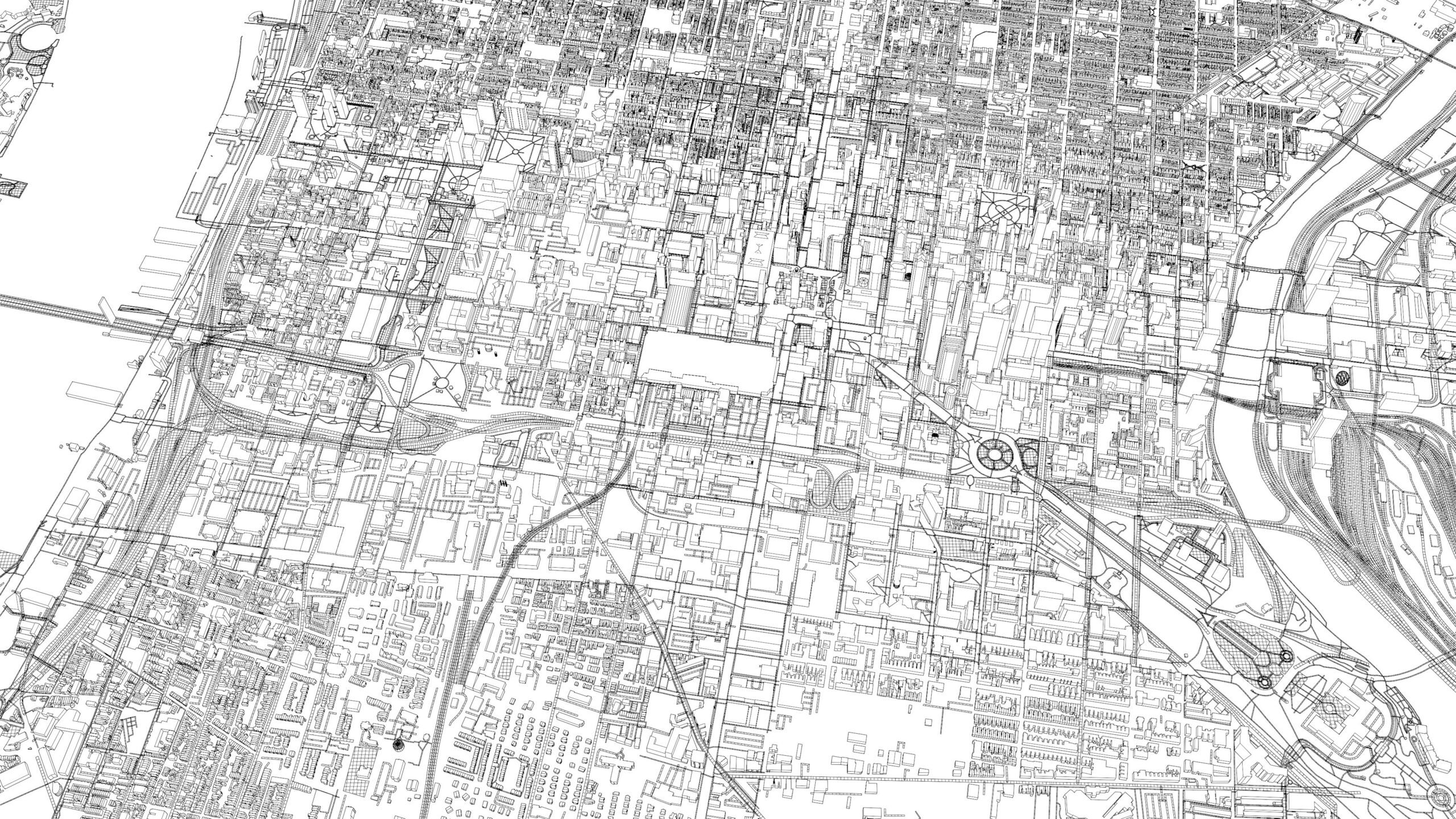Philadelphia Imposes New Rules And Regulations On Residential Property Wholesalers
In real estate wholesaling, a wholesaler enters into a written agreement of sale to purchase the property with a property owner and then finds an...
5 min read
Alan Nochumson : Jul 10, 2024 9:00:00 AM

In two recent cases of note to property owners in Pennsylvania, the Commonwealth Court of Pennsylvania sided with the city government in Philadelphia regarding the imposition of substantial fines for continuous building code violations issued by the city of Philadelphia’s Department of Licenses and Inspections (L&I).
In City of Philadelphia v. Neely, 2024 Pa. Commw. Unpub. LEXIS 163 (Mar. 25, 2024), the Commonwealth Court affirmed substantial cumulative fines for unresolved noncompliance of certain aspects of the building code.
In Neely, the property owner was issued a violation notice in the early 2017 due to an alleged unsafe structure situated at the property, the opinion said.
The violation notice in Neely required the property owner to either repair or demolish the building structure, the opinion said.
In addition, L&I, in the violation notice, notified the property owner of the imposition of daily fines ranging from $150 to $2,000 per day until the building structure was deemed safe upon an inspection performed by L&I, the opinion said.
According to the opinion, the sought after governmental fines were based upon Section A-601.4 titled “Separate Offense” of the Philadelphia Code, which states that “[e]ach day that a violation continues after issuance of a notice or order shall be deemed a separate offense.”
Over a year after the violation notice was issued the building structure remained in disrepair and the property never filed an administrative appeal of the violation notice, the opinion said.
As a result, L&I continued to impose the upper limit fine of $2,000 per day due to the uncured violation set forth in the violation notice, the opinion said.
Thereafter, the City of Philadelphia brought suit against the property owner in the Philadelphia County Court of Common Pleas in trial court and ultimately requested the entry of a default judgment for a sum of $1,138,000, the opinion said.
Basing upon the length of time the violation was uncured, and prior case history, the trial court determined those cumulative daily fines to be reasonable and constitutional, the opinion said.
On appeal, the Commonwealth Court Upon affirmed the default judgment, but remanded the case to the trial court for a reassessment of damages.
Following the presentation of evidence at trial, the trial court reiterated each daily fine was a separate violation, and, therefore, the total amount was reasonable.
However, in doing so, the trial court reduced the overall fine to $113,800.
Despite the reduction of the judgment, the property owner in Neely again appealed the trial court’s ruling to the Commonwealth Court, alleging the fine amount was excessive and unconstitutional, according to the opinion.
On appeal, the Commonwealth Court came to the same conclusion as the trial court, finding the fine amount to not be excessive nor unconstitutional, relying on a similar decision in City of Phila. v. Joyce, 242 A.3d 993 (Pa. Cmwlth. 2020).
The Commonwealth Court in Neely noted that, although the fine amount is substantial, the property had almost 2 years from the issuance of the violation notice to file an appeal of the violation notice or remedy the alleged violation, with neither action being taken.
The property owner in Neely made a final argument, claiming the fine amount to be disproportionate to the value of the property, making the fines wildly unreasonable, the opinion said.
The Commonwealth Court cited several prior opinions which stated the value of a property is not taken into consideration when determining the appropriate amount of the governmental fine and, thus, the fine of $113,800 against the property owner in Neely was affirmed and the property owner had to foot the proverbial bill.
In a similar case docketed as City of Philadelphia v. Hammond, 2024 Pa. Commw. Unpub. LEXIS 266 (May 29, 2024), the Commonwealth Court weakened the trial court’s discretion in determining nominal or de minimis fine amounts where the original amount is substantial.
In Hammond, the property owner owned a three-unit residential property in the Logan neighborhood of Philadelphia, the opinion said.
In April of 2017, L&I issued a violation notice to cease operations at the property after finding that the property was infested with insects and otherwise unsanitary, the opinion said.
According to the opinion, the property owner never corrected the issues with the property, and, upon a reinspection of the property in April of 2019, the property was still occupied by tenants, the opinion said.
Additionally, it was discovered during the property inspection that the fire alarm system in the building structure situated at the property was inoperable, posing a significant safety threat to the residents and others, the opinion said.
The property owner was again notified by L&I of the code violations and that they would result in a daily fine of up to $1,300 until they were corrected, the opinion said.
Similar to the factual circumstances of Neely, the property owner in Hammond did not file an administrative appeal of the violation notices and instead left the alleged code violations unresolved until the City of Philadelphia finally filed suit against the property owner in July of 2021, seeking fines for the continued failure to resolve the code violations.
The City in Hammond emphasized that the property not only posed safety hazards to the tenants residing in it, but also to the occupants of the surrounding properties, the opinion said.
In Hammond, the City showed that the property was located in a high-traffic area and that the building structure situated at the property shared a wall with the neighboring building structure, the opinion said.
Following multiple hearings in front of the trial court and another reinspection of the property, the City in Hammond asked the trial court to impose fines totaling over $1,080,000 for violations that ultimately continued for a period of 869 days, according to the opinion.
Upon first review, the trial court in Hammond affirmed the fines requested by the City, but upon request for reconsideration by the property owner, the trial court amended its court order and reduced the judgment to a total fine (including fees) of $250.
In Hammond, the City, not the property owner, appealed to the trial court’s ruling to the Commonwealth Court in order to challenge the imposition of a nominal fine.
Among the City’s concerns was that the trial court only considered mitigating factors when it should have also considered aggravating factors presented by the City, according to the opinion.
According to the Commonwealth Court, the trial court considered three mitigating factors, all of which it believed were factually false. The factors included an incorrect mailing address, the vacancy of the property for years after notice was given, and the issues being remedied prior to any legal proceedings commencing, the opinion said.
The Commonwealth Court in Hammond also looked to the adjoining property, a convenience store, and determined that, even if the claim that the building structure was vacant were true, the lack of fire alarm system still posed a significant risk to both the adjoined building structure and the neighborhood as a whole.
The City also cited previous decisions of the Commonwealth Court in asserting the validity of continuous fines for unresolved code violations.
In the list of aggravating factors, the City reiterated the fact that the property’s building structure had a shared wall, leaving the adjoined property in a dangerous situation.
According to the opinion, the Commonwealth Court in Hammond determined, upon appeal, that, although the property owner supposedly remediated the fire alarm system in September of 2021, that was nearly 2 years after the initial violation notice, disqualifying it as a mitigating factor.
The Commonwealth Court in Hammond ultimately came to the conclusion that the trial court committed an abuse of discretion in reducing over $1,000,000 of fines to a nominal fine amount of $250.
The Commonwealth Court relied on its previous decision in JPR Holdings, LLC v. City of Phila., 247 A.3d 1185 (Pa. Cmwlth. 2021), which found there was not an abuse of discretion when the trial court imposed a $52,000 fine when the maximum allowable amount was $800,000.
The Commonwealth Court noted that, in contrast to JPR Holdings, the trial court in Hammond did not consider all relevant factors and blindly diminished the total fine amount, according to the opinion.
In Hammond, the Commonwealth Court also determined that the trial court relied upon mitigating factors that were actually aggravating factors, but also factors that were not true.
As a result, the Commonwealth Court vacated the judgment and remanded it back to the trial court for reconsideration on the amount to be imposed by weighing both aggravating and mitigating factors.
These recent rulings handed down by the Commonwealth Court highlight the importance of keeping tabs on any and all properties owned, even if they are not currently under construction or stabilized. Property owners in Philadelphia would be well-advised to check Atlas, the City’s website for property information, regularly to ensure they are informed about issued code violations and to take timely action in the event a code violation is issued.
Alan Nochumson is a shareholder of Nochumson P.C., a legal services firm with a focus on real estate, land use & zoning, zoning, litigation, and business counseling for the people of Pennsylvania and New Jersey. Nochumson is a frequent author and lecturer on issues commonly confronting businesses, individuals and professionals. You can reach him at 215-600-2851 or alan.nochumson@nochumson.com.
A special thanks to Justin Azran for helping to write this alert.

In real estate wholesaling, a wholesaler enters into a written agreement of sale to purchase the property with a property owner and then finds an...

Under LOOP, property owners who saw their certified market valuations more than triple from 2013 to 2014 will save money on their property taxes for...

In In re Appeal of Council Member Cindy Bass, 2024 Pa. Commw. LEXIS 172 (July 19, 2024), the Pennsylvania Commonwealth Court affirmed, in part, a...